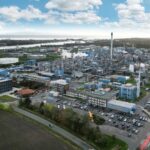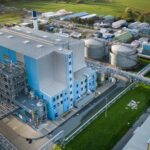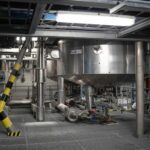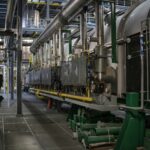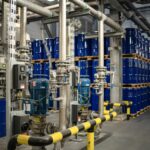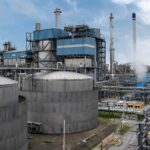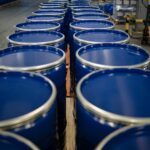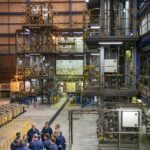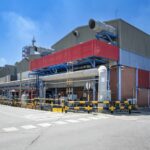CARE-O-SENE
DIGITAL PRESS KIT
Welcome to your digital press kit about the CARE-O-SENE project! Here you will find all the information about the project, frequently asked questions as well as visuals.
To access all the information locally, you can download the complete folder here as a full PDF.
The entire CARE-O-SENE team thanks you for your interest in sustainable processes for the production of green kerosene.
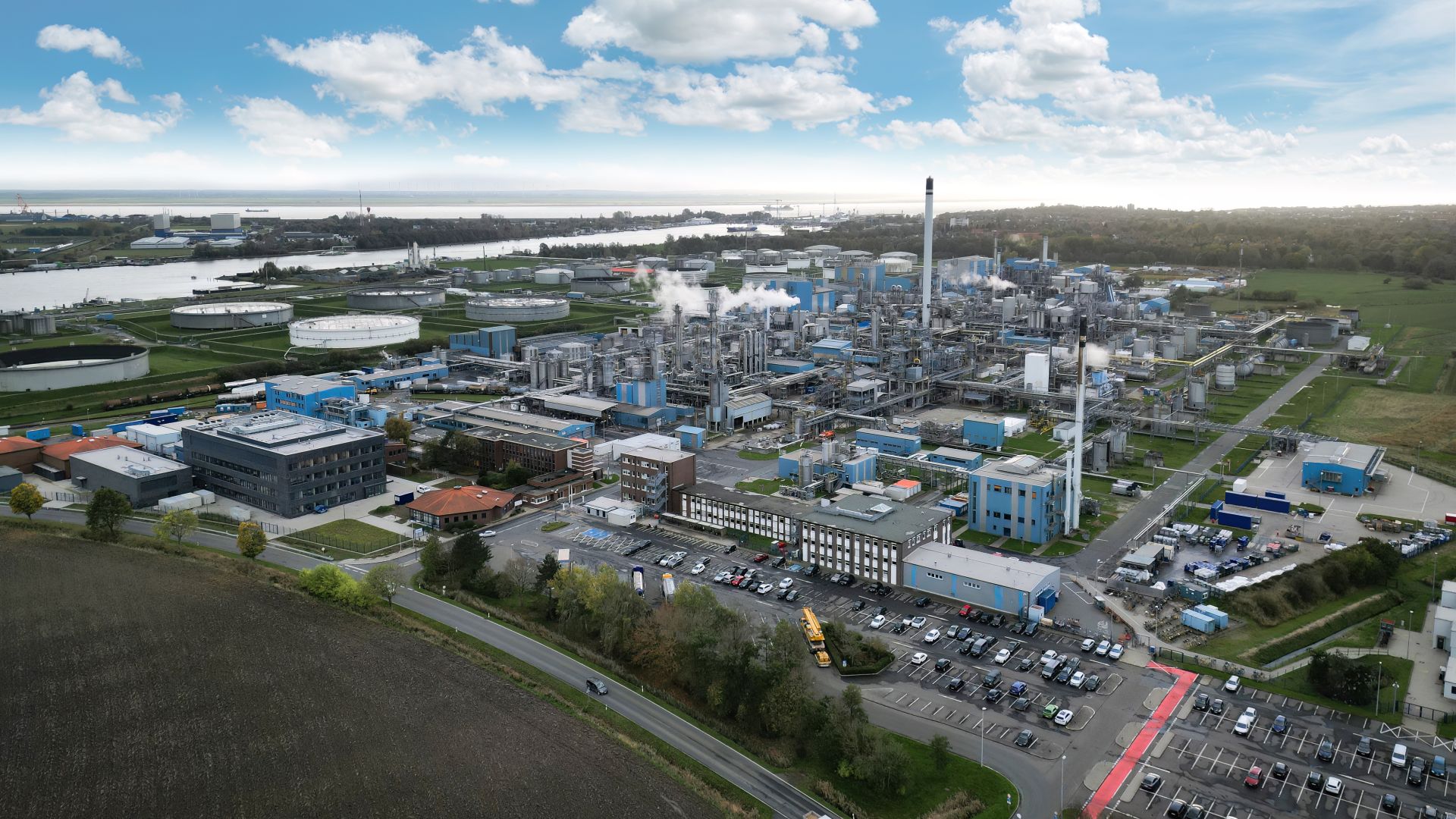




CARE-O-SENE
Catalyst Research for Sustainable Kerosene
CARE-O-SENE (Catalyst Research for Sustainable Kerosene) is a German-South African research project for the new and further development of catalysts in the Fischer-Tropsch (FT) process. These FT catalysts play a key role in the large-scale production of green kerosene. With the help of optimised catalysts, sustainable aviation fuels (SAF) can be produced more efficiently.
The international consortium has received funding of around 30 million euros from the Federal Federal Ministry of Research, Technology and Space. Furthermore, CARE-O-SENE is the first project of the German National Hydrogen Strategy in which solutions for a worldwide challenge are being developed in global cooperation.
Key data of the research project:
- By 2025, CARE-O-SENE wants to set the course for large-scale production of green kerosene with a new generation of catalysts
- Goal: More than 80 percent kerosene yield, significantly more fuel production with the same resource input
- 30 million euros in funding from the Federal Ministry of Research, Technology and Space (BMFTR)
- International consortium partners contribute an additional 10 million euros
- Important component of the National Hydrogen Strategy of the Federal Republic of Germany
Seven German and South African project partners contribute their expertise:
- Sasol Ltd. and Sasol Germany GmbH
- Helmholtz-Zentrum Berlin fuer Materialien und Energie (Helmholtz Centre for Materials and Energy, HZB)
- Fraunhofer Institute for Ceramic Technologies and Systems (IKTS)
- Karlsruhe Institute for Technology (KIT)
- University of Cape Town, Department of Chemical Engineering (UCT)
- INERATEC GmbH
Media contacts:
Sasol
Sunna Schulz, Senior Manager Corporate Affairs Eurasia Chemicals
Direct telephone: +49 40 63684-1364; Mobile: +49 152 0835 3881
sunna.schulz@de.sasol.com
Torsten Titze, Manager Integrated Communication Chemicals
Direct telephone: +49 40 63684-1434; Mobile: +49 173 66 800 90
torsten.titze@de.sasol.com
Helmholtz-Zentrum Berlin für Materialien und Energie
Dr. Ina Helms, Head of Communication Department
Direct telephone: +49 30 8042-42034
ina.helms@helmholtz-berlin.de
About Sasol:
Sasol Germany GmBH is a manufacturer of high-quality chemical products with production sites in Brunsbuettel and Marl and its head office in Hamburg. Around 1,800 empolyees and almost 60 trainees produce innovative, sustainable products and develop solutions for the processing industry. The company offers a wide range of products, including substances for the production of detergents and cleaning agents, paints and coatings, cosmetics and pharmaceutical products. In addition, specialities such as high-purity and ultra-high-purity aluminas are used, for example, as catalyst carriers in catalytic converters for the automotive industry, industrial applications and high-performance abrasives.
Sasol Germany GmbH is part of the South African Sasol Group, a leading integrated chemical and energy company with almost 29,000 employees in 22 countries manufacturing and marketing first-class products.
About HZB:
The Helmholtz-Zentrum Berlin fuer Materialien und Energie (HZB) is researching solutions for a climate-neutral society. Re-searchers are developing and optimising efficient and cost-effective energy materials for photovoltaic cells, batteries and catalysts. The HZB uses a research infrastructure with the accelerator-based x-ray source BESSY II which enables unique insights into materials and permits operando analyses. With around 1,200 employees, HZB is one of the largest non-academic research centres in Berlin in the field of energy research and is member of the Helmholtz Association. More information: www.helmholtz-berlin.de
PRESS RELEASES
Dr. Dirk Schaer

Dirk is responsible for the marketing and sales of Sasol’s high performance Cobalt Fischer-Tropsch catalysts enabling Sasol’s own proven Fischer-Tropsch technology as well as alternative micro-channel and fixed bed technologies. Further to this, he is Co-leader of the CARE-O-SENE catalyst development consortium.
Dirk is fascinated by developing new markets and cooperating with groundbreaking companies and passionate start-ups specifically in sustainable markets.
POSITION
Technical Manager Marketing and Sales Catalysts
Co-Lead CARE-O-SENE Project
COMPANY
Sasol Germany GmbH
Areas of expertise
Dirk has a long track record within Sasol Chemicals in different technical customer support, market development and marketing roles. He gained experience in a wide range of applications including plasticisers, lubricants, latent heat storage materials and homogeneous catalysts. Within all these roles, he demonstrated his high customer orientation and centricity.
Finding sustainable solutions together with his customer was always one of his major goals. This puts Dirk in the perfect position to further develop Sasol’s highly specialised catalyst business and to drive the fuel and chemical industry’s transition into a carbon free future from a catalyst point of view.
Dirk holds a Ph.D. in Chemistry from Georg-August University of Goettingen, Germany.
Dr. TOBIAS SONTHEIMER

Tobias is the head of Strategy Department for Energy and Information at Helmholtz-Zentrum Berlin and co-leader of the CARE-O-SENE project. For the past fifteen years, Tobias has worked in strategy development to reshape the energy sector. At HZB, he is currently driving research and technology development in the field of solar energy and green hydrogen-based technologies.
POSITION
Head of Strategy Department for Energy and Information at Helmholtz-Zentrum Berlin & Co-Lead CARE-O-SENE project
COMPANY
Sasol Germany GmbH
Areas of expertise
His profound technological and systemic understanding of the energy sector is key for successful strategy development and project management. He has extensive experience in collaborating with stakeholders in academia, industry, and politics. Previously, Tobias was the Chief Research Manager for the national energy R&D portfolio of the Helmholtz association.
He is very passionate about forming new international innovative partnerships in the energy field that facilitate the transition to a carbon-free sustainable future.
Tobias studied physics at RWTH Aachen University and Harvard University and graduated with a PhD in renewable energy technologies as a scholar of SCHOTT AG.
FAQ
SAF stands for Sustainable Aviation Fuels. SAF refers to all sustainably produced aviation fuels, such as biogenic and synthetic fuels.
SAFs are divided into different generations. The first generation includes plant-based SAFs that are produced from vegetable oils. The second generation consists of SAFs produced from biomass, for example from waste and wood residues. The third and fourth generations consist of synthetic fuels. This is where the power-to-liquids (PtL) process comes into play.
For a fuel to be considered an SAF – and thus sustainable – the raw materials used are evaluated according to certain sustainability criteria. Criteria include whether there is competition with food production, how much drinking water is used and whether there is any destruction of ecosystems, for example through additional agricultural cultivation.
The key to decarbonising aviation is the technology to convert energy into liquid energy carriers (power-to-liquids; PtL) to produce SAF. One of the technologies used for this is the Fischer-Tropsch (FT) process for converting hydrogen and carbon dioxide from sustainable sources into SAF. The resulting SAFs are not based on fossil fuels like conventional kerosene but on renewably generated electricity and carbon dioxide.
The Fischer-Tropsch process converts green hydrogen and carbon dioxide into a synthetic fuel. New types of catalysts are being developed for this as part of the CARE-O-SENE project. Catalysts increase the efficiency of chemical conversion processes. This improves the process yield and significantly increases fuel production with the same amount of resources, which serves the goal of decarbonising the aviation sector.
The Fischer-Tropsch process, unlike alternative power-to-liquid processes, is already established in the market. Sasol brings over 70 years of experience on Fischer-Tropsch catalysts to the table and is the technology leader in this field.
Due to global climate protection efforts and, in some cases, mandatory blending ratios for power-to-liquid kerosene, a strongly growing demand for sustainable aviation fuels is to be expected. Since green electricity and hydrogen will be relatively scarce commodities in the forseeable future, it is essential to use these raw materials as efficiently as possible. CARE-O-SENE has, therefore, set itself the goal of increasing the kerosene yield to more than 80 percent, thanks to new catalysts. This means that significantly more fuel can be rendered usable with the same amount of resources
The aircraft would then no longer run on a fossil raw material but a synthetic alternative – that is a great advantage. Nevertheless, a combustion process still takes place – with carbon dioxide as an output. However, this carbon dioxide is returned to the cycle and used as a raw material. Depending on the CO2source, it is possible to produce partially or completely CO2-neutral kerosene. For example, this can be captured from industrial processes or waste incineration. With CO2-neutral SAF, no additional CO₂ is released into the atmosphere.2 , no additional CO₂ enters the atmosphere.
No changes to existing aircraft or the supporting infrastructure are necessary for the use of SAF. As so-called drop-in fuels, SAF can be used for standard passenger aircraft. SAFs are already being added to conventional fossil fuels in small quantities.
By circular carbon dioxide we mean CO2that has a biogenic origin or was directly captured from the air ("direct air capture"), then further processed in chemical processes and released again through combustion processes, as in the case of sustainable fuels.
VISUALS
BRUNSBUETTEL
Here you will find a selection of images of our plant in Brunsbuettel, Germany.
For the complete collection of images in print resolution, click on the button below.
83 Images; 1,85GB
You will be redirected to picdrop.com.
SASOLBURG
Here you will find a selection of images of our plant in Sasolburg, South Africa.
For the complete collection of images in print resolution, click on the button below.
33 Images; 320MB
You will be redirected to picdrop.com.
BRUNSBUETTEL
Here you will find a selection of images of our plant in Brunsbuettel, Germany.
For the complete collection of images in print resolution, click on the button below.
83 Images; 1,85GB
You will be redirected to picdrop.com.
SASOLBURG
Here you will find a selection of images of our plant in Sasolburg, South Africa.
For the complete collection of images in print resolution, click on the button below.
33 Images; 320MB
You will be redirected to picdrop.com.
FACTS & FIGURES
Euro project volume
percent kerosene yield thanks to new catalysts with the same resource input
we want to set the course for large-scale production of green kerosene with new catalysts.
project partners from Germany and South Africa combining their expertise for developing new, efficient catalysts.
